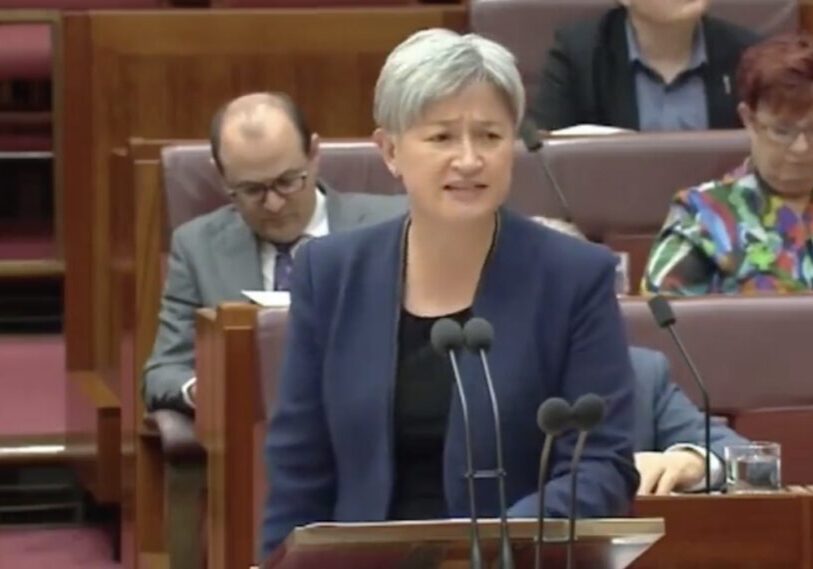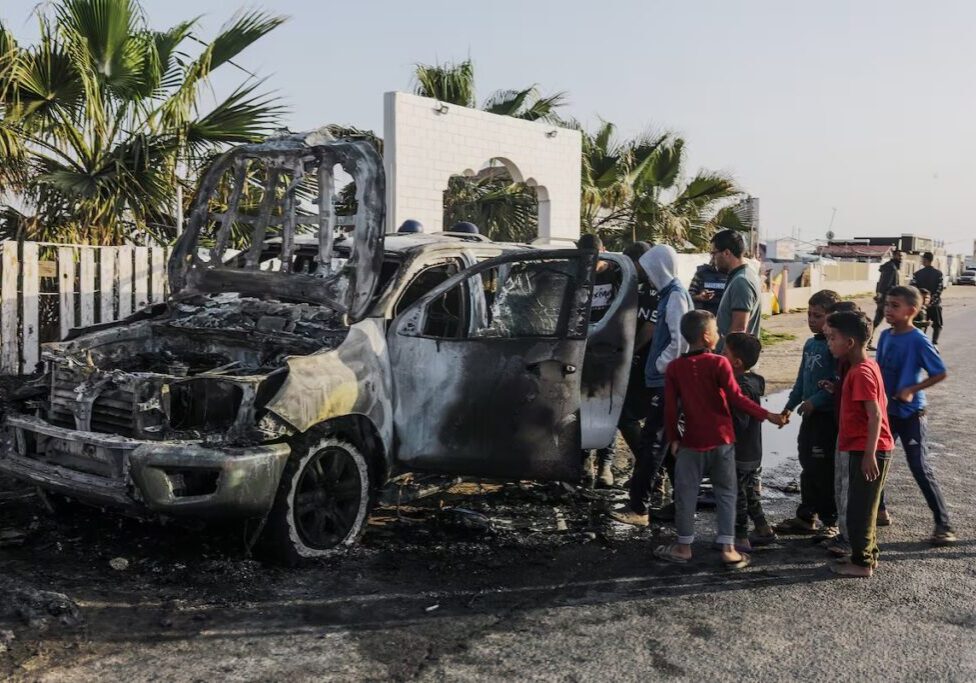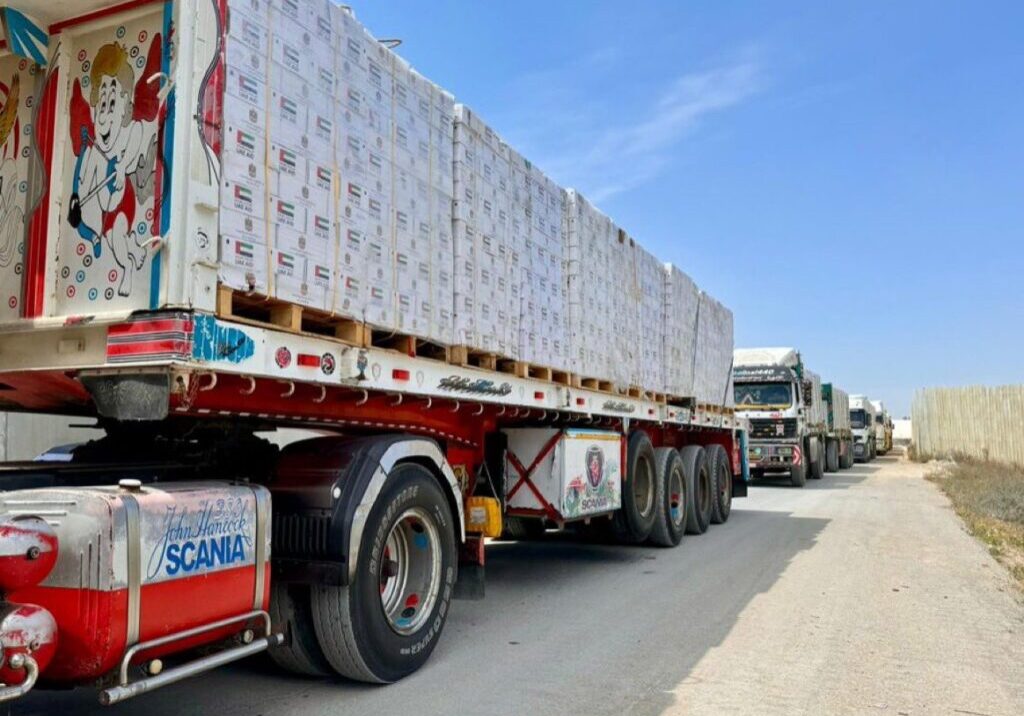Australia/Israel Review
Media Microscope: Botched Balancing Act
May 27, 2008 | Jamie Hyams
Jamie Hyams
SBS TV’s choice of documentaries about the Middle East used to show a marked leaning towards the Palestinian narrative. Lately, they have become more even-handed on the whole, but there is still the odd lapse. To mark the anniversary of Israel’s independence, they showed two documentaries about the war of 1947-49. The first, “I Remember 1948”, shown on May 13, was so tilted towards the most extreme, absurd Palestinian narrative of the events of 1947-48 that it was laughable.
It started with a graphic reading, “In 1948, a resolution was forced through the United Nations to partition Palestine and create the state of Israel. Palestinians were fearful of the attacks by Zionist terror groups, who wanted even more land. 750,000 Palestinians were displaced in 1948. These are the stories of four survivors of that exodus who eventually made their way to Australia.” So the partition resolution didn’t just pass the UN, it was “forced through”, Israel didn’t accept the partition, but violently sought more land, while the Arabs apparently neither rejected the partition plan nor declared war and invaded, nor seemingly committed any violence at all.
After that inauspicious start, the rest of the program consisted simply of the four survivors telling horror stories of supposed Israeli atrocities direct to the camera. One man, who said he left his village where most of the villagers were hiding in a giant hole, claimed, “We later on knew that the people who stayed inside that big hole were captured by the Zionist army and the women and children were standing on one side and they made the rest of the men stand in a queue and shot them in front of their families.”
Despite the fact that the majority of refugees fled without even seeing an Israeli soldier, these refugees all spoke of leaving under fire and dodging bombs. One claimed, “the Jews were shelling us while we were on the beach” and another claimed they were being shelled while escaping on boats. One claimed he saw that “One tank came along and ran over the body [of a woman] and the baby as well.” Another said, “Israel is now eliminating the Palestinian people and expelling them. Dead or alive, it makes no difference to them.” The only good points about the program were that it was shown at 11.45 pm and only went for half an hour, including ad breaks.
The following night SBS showed “Jerusalem Cuts”, a Swiss documentary about the events of 1948, telling the story mainly of the battle for the Jewish Quarter of the Old City of Jerusalem from three different perspectives.
The first is through the photos and diaries of British war photographer John Phillips, who travelled with the Jordanian Arab Legion, which captured the Jewish Quarter and expelled all the Jews. Phillips’ photos and excerpts of his diaries showed the Jews surrendering and being expelled, and the subsequent Palestinian looting.
The second is Jack Padwa, who, five years later, produced a film about the battle. He talks the viewer through significant parts of his film, showing the surrender and expulsion.
The program then talks to Zaki Zaarour, whose father Ali was “the only Palestinian who took photos of the battle over the Old City in 1948.” His photos also show the destruction of the Jewish Quarter from the battle, Jewish and Arab refugees and villages destroyed by the Israelis or, as the narrator states, “Naqba, the Palestinian catastrophe, documented by Ali Zaarour’s camera.” Zaki Zaarour alleges Israeli massacres of civilians, but had earlier said the Jews were massacred in the Old City. He also complains about the security barrier sealing him off from Jerusalem, and the uprooting of his family’s olive trees to make room for it.
In 1976, John Phillips had an exhibition in Jerusalem of some of his photos from 1948 together with photos he had recently taken of the same people. The exhibition was called, “Will to Survive”. The narrator states, “John Phillips, a foreign correspondent from distant shores, took photos which were appropriated by the Israelis, but they tell only one side of the story.”
Some of the Zaarour photos were stolen from his family’s house in 1967, and turn up in the Israeli military archive. The narrator states,“When photographs are looted, fiction takes over reality, but they never go away, the ruins or the memories.” Zaki Zaarour is then shown taking his grandchildren to the ruins of the house where his father was born. The photos are subsequently returned to him.
So to mark the anniversary, surely an auspicious occasion deserving a positive commemoration, SBS showed a virulently anti-Israel film followed by a film that showed both sides, but whose narration was clearly tilted toward the Palestinians. It’s some improvement on past practices, but it is still a long way from balance.
Tags: Australasia






